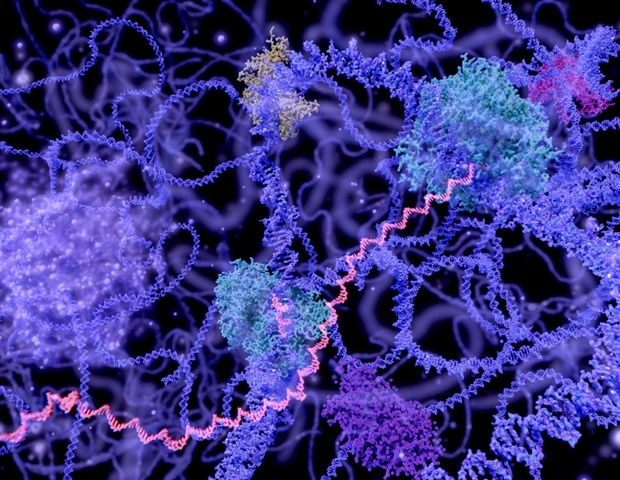In a recent study published in Frontiers in Psychology, researchers evaluate the association between paternal mental health and a child’s development during middle childhood.
 Study: Longitudinal associations between paternal mental health and child behavior and cognition in middle childhood. Image Credit: PeopleImages.com – Yuri A/Shutterstock.com
Study: Longitudinal associations between paternal mental health and child behavior and cognition in middle childhood. Image Credit: PeopleImages.com – Yuri A/Shutterstock.com
Background
Middle childhood, beginning at six years of age, is critical for every child as a child learns novel cognitive, social, and behavioral skills during this transitory phase.
Studies have examined the effects of paternal health on a child’s development during this crucial phase; however, focusing only on paternal depression but no other risk factors, such as anxiety and perceived stress.
A meta-analysis reported that paternal mental health issues present during pregnancy (prenatal) doubled the risk of psychiatric disorders in school-goers aged 6-8. Even paternal mental health-related conditions, e.g., substance abuse, have been shown to affect children adversely.
Likewise, environmental factors, such as family conflicts and differing parental views, may influence these associations. However, there is a lack of longitudinal follow-up studies examining the same.
Moreover, there is a lack of understanding of how the type of paternal mental health symptoms, their timing and severity, and other socio-environmental factors interact with or mediate this association during middle childhood.
About the study
In the present study, researchers prospectively gathered data from the first trimester of pregnancy until a child grew six to eight years of age from 2,366 mother–father–child triads of the Design, Develop, Discover (3D) pregnancy cohort study done in Canada.
Perinatal assessments covered the first self-reported episode of parental depression, anxiety, and stress symptoms and psychosocial measures, such as highest education received, quality of marriage index (QMI), and parenting perceptions during the pregnancy.
They used the Center for Epidemiological Studies Depression Scale (CES-D) to measure paternal depressive symptoms during the first trimester.
Similarly, they assessed QMI, a six-item self-reporting questionnaire rating the level of support received from a partner in childcare, household chores, etc., three, 12, and 24 months after childbirth.
At these three time points, each parent also self-reported the Parental Cognitions and Conduct Toward the Infant Scale (PACOTIS).
During the follow-up assessment done during middle childhood, they assessed paternal depressive and anxiety symptoms using the Beck Depression Inventory and Anxiety Inventory (BDI and BAI), respectively.
Likewise, a four-item self-reported perceived stress scale (PSS) helped them measure paternal stress levels. They used the Wechsler Intelligence Scale (WISC-V) for Children and the Strengths and Difficulties Questionnaire (SDQ) to make cognitive and behavioral assessments of children aged 6-8, respectively.
A full-scale IQ score was derived from a verbal comprehension index score, and a fluid reasoning index score was derived from the matrix reasoning and Figure Weights subscales. Further, the team collected the parent’s and child’s health history data.
Before proceeding to more complex statistical analyses, the team performed descriptive analyses for variables of interest and used Pearson’s correlations to assess the simple associations between predictors and outcomes.
They carefully selected maternal mental health symptoms and the highest parental education level as covariates and accounted for their potential influence on all study outcomes.
They also identified outliers that might skew results using a criterion of >2.5 standard deviations (SDs) from the mean; however, they found that all data points were within an acceptable range.
In addition, the team applied a correction for multiple comparisons using the false discovery rate (FDR) method, as this study involved numerous statistical tests.
The researchers then proceeded to regression-based mediation and moderation analyses to explore the mechanisms through which variables were related (mediation) and the conditions under which this relationship may change (moderation). The statistical significance threshold was set at a p-value of ≤0.05.
Various measures of paternal mental health were CES-D, PSS, STR, BDI, and BAI, and child outcomes were SDQ and WISC-V.
The researchers used multiple linear regressions to analyze the relationship between these and analyzed each combination of both outcomes using regression analysis.
Further, the researchers assessed whether the timing of paternal mental health, during pregnancy or in childhood, was associated with any specific child outcomes using multiple regression and moderation analyses.
Furthermore, the researchers explored the mediating effects of father’s parenting styles on child development at 24 months.
Results
All measures of paternal mental health (CES-D, STR, BDI, BAI, and PSS) and child’s developmental outcomes (WISC-V, SDQ) were in the normal range, and more importantly, these tended to be lower than maternal scores.
However, lower QMI scores at 24 months after childbirth were associated with higher paternal prenatal depressive and anxiety symptoms.
A similar correlation between paternal QMI and concurrent paternal anxiety and depression symptoms or child behavioral symptoms was, however, nonexistent during middle childhood.
Linear regression models showed that higher prenatal paternal depressive symptoms, as reflected in CES-D scores, were associated with fewer behavioral and emotional issues in children.
Post-hoc analyses showed that this relationship was associated with externalizing symptoms such as conduct problems and hyperactivity in the child, with respective beta-weights (β) of −0.285 and −0.275.
Conversely, there was no significant relationship detected between prenatal PSS or STR scores and a child’s cognitive development.
At follow-up assessment, linear regression models showed that more paternal depressive symptoms measured concurrently via BDI were associated with higher child IQ measured on the WISC-V (β = 0.246, p = 0.050).
These associations were primarily related to the child’s performance on the fluid and matrix reasoning subscales, reflecting that these children had acceptable abilities to think logically and solve complex problems even without prior knowledge.
The relative strength of associations between childhood paternal anxiety and depressive symptoms and full-scale IQ was similar, suggesting these were unique.
Furthermore, mental health symptoms timing and paternal parenting perception (PACOTIS) did not moderate the observed associations. Likewise, paternal ratings of marriage quality (QMI) did not moderate the observed relationships.
Moreover, evidence of the moderating or mediating role of certain environmental factors in these associations was lacking.
Contrastingly, maternal anxiety moderated the relationship between higher levels of paternal depression and cognitive outcomes in children aged 6-8.
Findings concerning the timing when exposure to parental mental health issues affects a child’s developmental outcomes are unclear. Thus, there is a need to support parents’ psychological well-being pre- and post-natally.
Conclusions
Overall, the study data suggests that prenatal paternal mental health may be moderately predictive; however, concurrent paternal mental health is highly predictive of the cognitive performance of a child in middle childhood.
Yet it is not clear when this switch happens and what are its underlying mechanisms, which presents an apparent paradox considering the existing literature.
It was also notable that a father’s parenting styles, such as showing warmth, were associated with lower internalizing behaviors in the child, suggesting that fathers might help alleviate the effect of high maternal depression on a child’s behavioral problems.
Follow-up studies with larger sample sizes, even within the same cohort, may be able to test these complex interactions.
In this study, children with fathers who self-reported higher anxious or depressive symptoms during pregnancy or middle childhood performed better on cognitive assessment and exhibited no or fewer behavioral difficulties at school.
However, given the complex nature of these associations, continued research on these is needed across a spectrum of mental health symptom severity and on the longer-term social, emotional, and cognitive development of a child.








